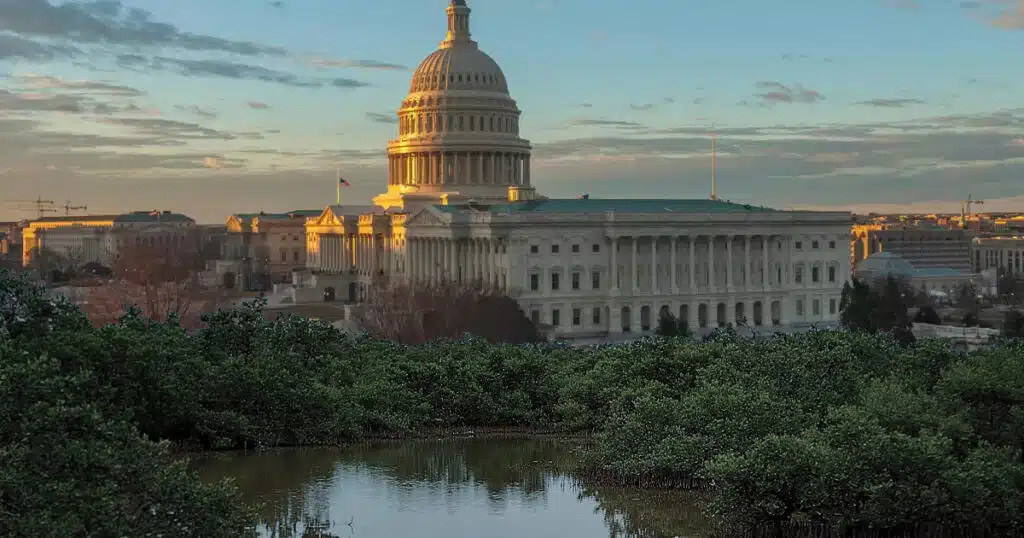Daylight Saving Time, Voted By The Senate To Be Permanent, Is Bad For Human Health
Now that daylight saving time, DST, is gone and won’t be back for another four months, until March 12, 2023, actually, and so far one chamber of Congress has voted overwhelmingly to make the shifted time permanent, there’s ample opportunity to consider why researchers argue DST isn’t healthy.
Simply, scientific observations have concluded morning light helps keep our internal clocks on track and DST screws that up.
On November 6, every state in the country except Hawaii and most of Arizona — which don’t abide by the time changing — switched from daylight saving time to standard time. An hour of light was shifted for all involved from the evening to the morning. In March, the clocks will again spring forward and trade an hour of morning light for brighter evenings — unless lawmakers intervene.
The biannual time change has long been the source of disagreement between those who enjoy early morning darkness and others who like being able to see their eggs and toast on their breakfast plates; lately, it’s lit a good deal of added debate since the U.S. Senate unanimously voted in March to keep DST throughout the year.
The Sunshine Protection Act would forgo turning clocks forward and back, repeating an unpopular experiment Congress tried in
1974 and repealing a year later after so many in the public complained.
In fact, the name “daylight saving time” isn’t quite right, says Kenneth Wright, a sleep and circadian expert at the University of Colorado Boulder, because there’s no actual change in the amount of daylight at all. “What we’re doing is changing how we live relative to the sun.”
When we move our clocks forward an hour, noon no longer represents when the sun is near its highest point in the sky and people’s solar schedules end up out of sync.
Wright says that’s a big deal biologically because humans evolved with a daily cycle of light and darkness that affects the rhythms of people’s bodies and helps them fall asleep, awaken and even release hormones. For instance, morning light is a fundamental wake-up signal, he said, so when people fiddle with the natural passage of time, “we’re essentially making the choice: Do we want to go with what we’ve evolved with or do we want to alter that?”
Asked if he had to rank permanent DST, permanent standard time or the current practice of biannual clock changing, Wright answered that “I think the answer is incredibly clear.” Permanent standard time is healthiest for humans, while permanent DST is least healthy.
Wright is not alone in his daylight distress.
Scientific research has linked sleep loss, heart attacks and an increased risk of dying in the hospital after a stroke to the transition to DST, neurologist Beth Malow wrote in the September issue of the journal Sleep. She testified about those findings earlier this year in front of a U.S. House of Representatives subcommittee.
“My overall message was that permanent standard time was a healthier choice,” said Malow, of Vanderbilt University Medical Center in Nashville.
Malow and Wright agree some of the most compelling studies about the effects of DST focus on U.S. time zone borders. Living on the late sunset side of a border takes a toll on people’s health and sleep, compared with those living on the early sunset side, scientists concluded in a 2019 study. Similar research in 2018 found an increased risk of liver cancer the farther west people lived within a time zone, where the sun rises and sets later in the day.
On the other hand, or hoof, as it were, a recent examination suggested that year-round DST would reduce deer-vehicle collisions — although such studies can prove hard to interpret, Malow said, since consideration must be given to other factors, like the seasonal activity of deer and changes in roadway conditions.
“The car-crash literature has been so mixed,” she says. “I’ve seen stuff come out on both sides.”
Malow cites a study in Time & Society that found people on the western edge of a time zone had more automobile fatalities than their easterly neighbors.
Dark mornings and lighter evenings mean people’s body clocks don’t line up with the sun and that mismatch can hamper sleep, causing drowsy drivers, which may factor into collisions, said Malow. In the evenings, if “there’s still light in the sky, it messes with our brains.”
The brains of teens and tweens are more vulnerable to the unnatural time shifts, Malow explained, because when those age groups go through puberty, when DST is in effect, their brain wait an hour or two longer to release melatonin, the “hormone of darkness,” which tells the bodies of kids and adults that it’s time to go to sleep.
That said, during DST, bedtime can be tough for older kids because, physiologically, they’re just not as sleepy as they used to be.
In 2017, the Cherry Creek School District in suburban Denver flipped the daily early start times for middle and high schools with the elementary schools’ later schedule. The change didn’t much affect the younger students, who still started class well after sunrise, at 8 a.m. But older kids, who started school at 8:20 a.m. or 8:50 a.m., noticed a big difference. They slept more at night and tended to function better during the day, reported a research team in the journal Sleep Medicine.
So far, it seems the Senate’s plan for year-round DST has stalled, so the prospect of an everlasting shift toward evening light doesn’t look too bright at least for now. Of course, that means when next March rolls around and DST springs anew, most of America will have to adjust again.



